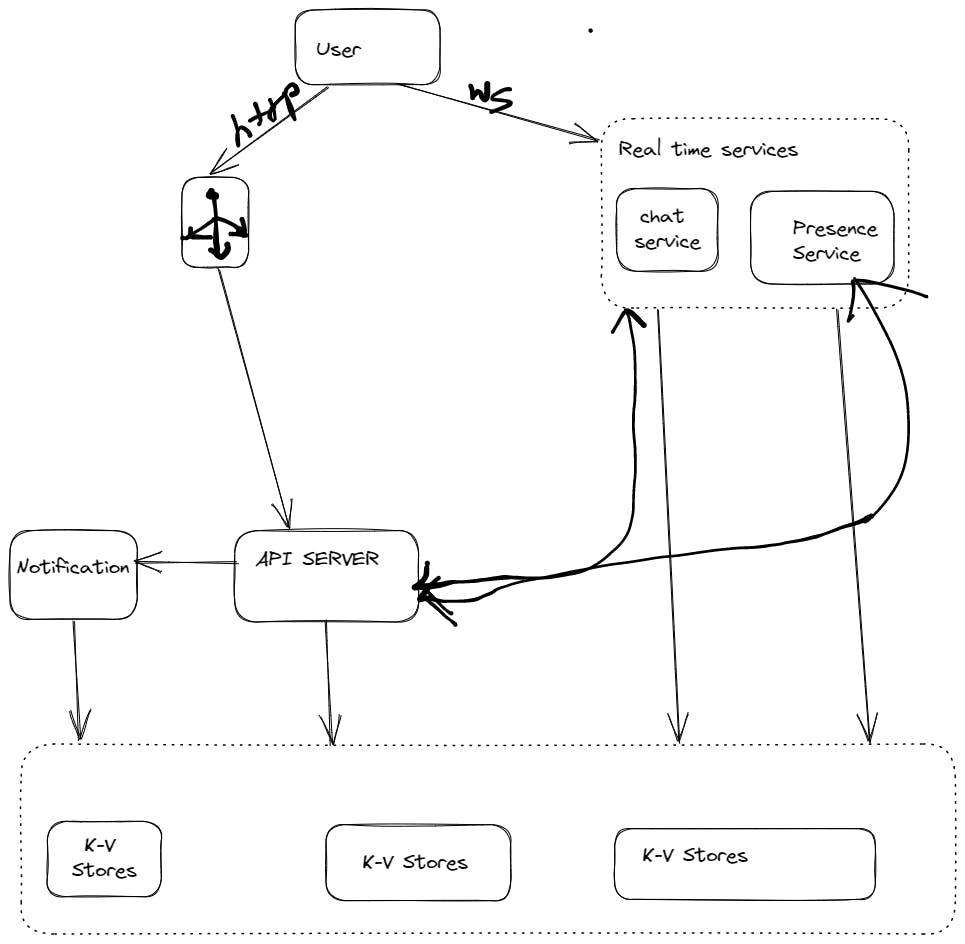From part-1 on we decided to choose a WebSocket network protocol for communication to simulate server-initiated connection. WebSocket connection initiated by Client. It is bidirectional and persistent. Though it is a persistent connection, a server could send updates to a client.WebSocket generally works even if a firewall is in place. This is because of the same port 80 or 443 used by HTTP/HTTPS.

High-Level Design
As we decided to use websocket for a chat so for other features we can use the traditional request/response method of HTTP(Rest API).
So Now the chat system is divided into three parts:- Stateless service, stateful service and third-party.

Stateless Service-> Manage user sign-up. login, user profile etc.
Stateful Service->Manage chat communication among users.
Third-party- Push Notification when the user is offline.
DataStore:
To Make a database choice - we have 2 types -SQL and No-SQL DB
RDMS for Stateless service for User Management. It can be scaled by using replication and Sharding technique.
But to maintain chat history data. Need to understand read/write the pattern.
Chat history has enormous data and users mostly check recent chats. But in some cases, users might want to search with a particular keyword and the chat system can navigate to a specific message.
So r/w = 1:1 in one -one chat
Random excess is expensive in RBMS.So we choose key-value stores to store messages. Facebook and Discord choose key-value stores for messages. Facebook is using HBase and Discord was using Cassandra but recently modified the architecture of Discord.
Key-value stores can easily be scaled horizontally and have low latency.
So high-level design with services and data store is

Final Design:

Please check out my blogs.

![[Cont...] System design of chat system-part2](https://cdn.hashnode.com/res/hashnode/image/upload/v1682064574446/d4eb2463-d5e5-47c0-9dc7-5a1cf7571b97.png?w=1600&h=840&fit=crop&crop=entropy&auto=compress,format&format=webp)